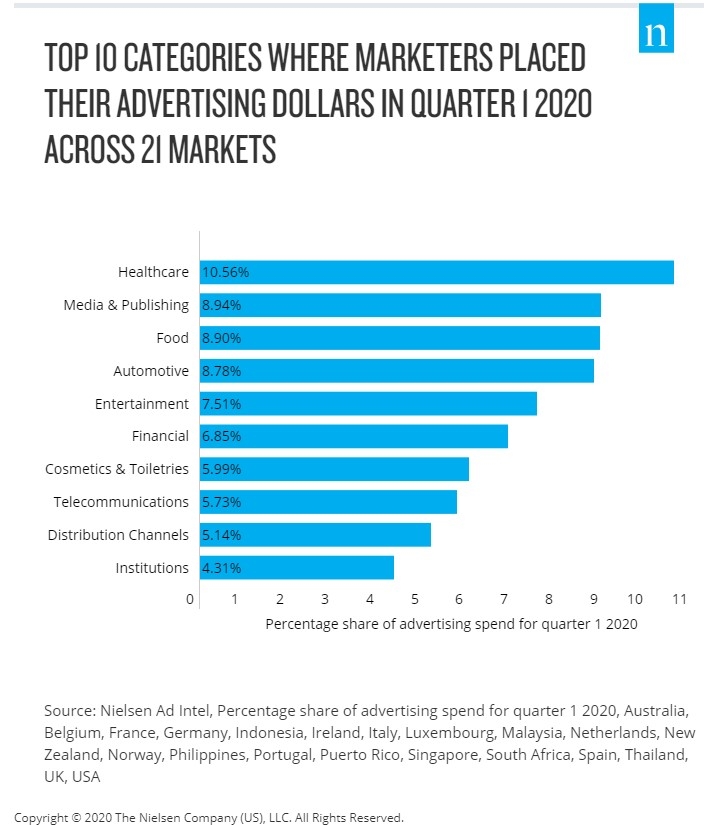Navigating Covid-19: A Post-Viral Marketer
by Louis Chan
Whoever the client or whatever their line of business, the current Covid‑19 crisis represents the greatest shock marketing professionals have faced since the Second World War. To many, if not all companies, a key question is how to approach marketing in a pandemic. Should they cut marketing spend to strengthen cash flows and dissociate themselves from the wall‑to‑wall coverage of death and infection or galvanise their marketing teams into pitching something positive and sustainable to the target audience as a means of helping to mitigate the long‑term adverse consequences of insufficient marketing exposure?
The current emergency has resulted in the creation of a large pool of highly engaged audiences trapped within the home environment by various quarantine, self‑isolation and social distancing measures. In order to assess the impact of this, HKTDC Research asked Lara Jefferies, founder and Managing Director of Plug, one of Hong Kong’s leading marketing and communications agencies, to share her experience of the battle against Covid‑19 and her advice as to how best to engage with stay‑at‑home, online‑centric consumers.
Less Can be More
The Covid‑19 outbreak has spared no one, impacting negatively on big brands and small marques alike. Among the worst affected are those companies that rely on tourism‑related shoppers and those brands that have seen both their home and international markets particularly badly hit. For marketing communications specialists, such as Plug, the outbreak has not actually changed the basics of their profession – the process of identifying target customers, evaluating how best to approach them, gaining insights into how they are spending their time and determining just which products and services can help meet the challenges they face.
Helping to ensure clients strike the right balance between cost savings and added exposure / enhanced brand equity in a crisis, however, requires a fair degree of dexterity. While Jefferies acknowledges that consumers are inevitably being more careful with their money, she remains adamant that brands need to continue to invest in their marketing. Expanding upon this, she said: “As a more frugal lifestyle is the current norm for most consumers, the marketing narrative needs to be reframed. This is also the time for many businesses , including – but not restricted to – those active in the healthcare, media, foodservices, automotive or entertainment sectors, to take a creative approach to their marketing in order to safeguard and expand their market share / brand awareness across multiple channels.”
Explaining how her company is helping clients stay in tune with their existing customers, while also enabling them to reach out to new prospects on a cross‑platform basis, Jefferies maintains that, even in a tough economy, the creative marketer will be able to drive consumer spending. Digging deeper into this, she said: “Customers are still out there, even if their movements are restricted and their shopping habits radically altered. One way to address this changed reality is to offer augmented alternatives that focus on digital outreach in order to improve online shopping experiences and make them just as engaging as their offline counterparts.
“At Plug, we have also been able to offer our clients the kind of adjusted services that enable them to focus on strengthening the online experience.”
In the short term, while many overseas markets are still largely inaccessible and budgets remain tight, Jefferies sees considerable potential in targetting domestic markets, an approach that allows cash‑strapped companies to ensure business continuity. Emphasising the need for companies to have clear priorities, she said: “In terms of business development, we’re advising our clients to first figure out their key goals and then to laser‑focus all of their resources on them. At present, for example, the relatively steady local demand in such markets as Hong Kong provides a genuine opportunity, even though a prolonged economic downturn is in the offing on a worldwide basis.”
Believing every crisis is ultimately a test of creativity, Jefferies is confident that those companies that can muster a degree of positivity and sufficient budgetary resources to try out new marketing platforms and channels as a means of developing more cost‑effective revenue sources will surely prosper. Addressing these requirements, she said: “We have to recognise that we are bidding farewell to the pre‑Covid‑19 world. As marketing specialists, we now need to walk our clients through the ‘new normal’ and look beyond the traditional marketing toolbox. This is a time to be truly creative, as that is the only thing that will help brands flourish in the post‑pandemic era.”
Be Creative and Experimental
While more people are suddenly spending an increased proportion of their time working, buying, gaming and live‑streamlining online, Jefferies believes this ‘online revolution’ has been at least 30 years in the making. The current turmoil, though, she sees as having put all conventional forms of physical retail at a severe disadvantage, while forcing businesses to think in purely digital terms and to embrace any related innovations. Looking forward, she maintains, the creation and management of a flexible, dynamic blend of an offline and online (O2O) presence will be pivotal to sustained business success.
Outlining the nature of the required transformation, she said: “We’ve witnessed many changes in companies that had previously relied heavily on physical retail. In particular, there have been huge strides towards digitisation in order to ensure that the customer experience is just as engaging online as offline – if not more so. Contrary to the siloed, channel‑specific strategies, tactics and metrics favoured by many, brands actually need to adopt a cross‑platform marketing strategy if they are to drive response and deliver business results in the new marketing landscape.
“In essence, there has been an explosion in smart customer engagement, all empowered by data‑driven analytics and artificial intelligence (AI) facilitated customer‑led services. Multi‑dimensional and augmented / virtual reality (AR / VR) product experiences are powered by AI, while in‑game and social shopping have hugely benefitted from advances in technology. All these developments allow the customer journey to be fast‑tracked from awareness, to consideration and purchase across various media and platforms.”
Another sign of the rapid shift from traditional marketing channels to online marketplaces is the continued success of key opinion leaders (KOLs) and key opinion consumers (KOCs). Explaining how these players can help SMEs in the current crisis and well beyond, Jefferies said: “It all boils down to reaching the audience. Even if you have an innovative brand, if it fails to connect well with its audience, it will be at risk of extinction.
“As with a number of other channels for engagement, KOLs can provide a rapid solution for any company looking to experiment, evolve or pivot as part of their move toward online and cross‑platform marketing. KOLs themselves, however, also need to evolve in response to changing market environments if they are continue to engage their audiences and develop their own brands. The same is true of KOCs, as creativity remains key, even when user‑generated content (UGC) becomes a more and more integral part of the digital marketing plan.”
Rebranding Ahead
From her perspective as a marketing specialist, Jefferies sees Hong Kong itself as having a remarkable story to tell, one that will resonate with international audiences at a time when the city is moving towards easing its social distancing regulations. She said: “Without doubt, Hong Kong did a very good job when it came to containing the virus. As in the many other sectors where the city excels, this has set a very high standard for the rest of world.”
Overall, Jefferies views the current Covid‑19 turmoil and the year‑long social disturbances as a time to reflect and re‑strategise. A firm believer in the entrepreneurial mentality and agility of Hong Kongers, she expects the city’s unique blend of Asian and Western influences and enabling infrastructure –both tangible and intangible – to continue to offer real business opportunities. Summarising her conviction, she said: “Now is the time that everyone needs to be creative in terms of searching out new, emerging opportunities and staking out their ‘white space’ within the new economic order. I have no doubt that we are set to see Hong Kong – one of the world’s most vibrant business centres – flourish once again.”


